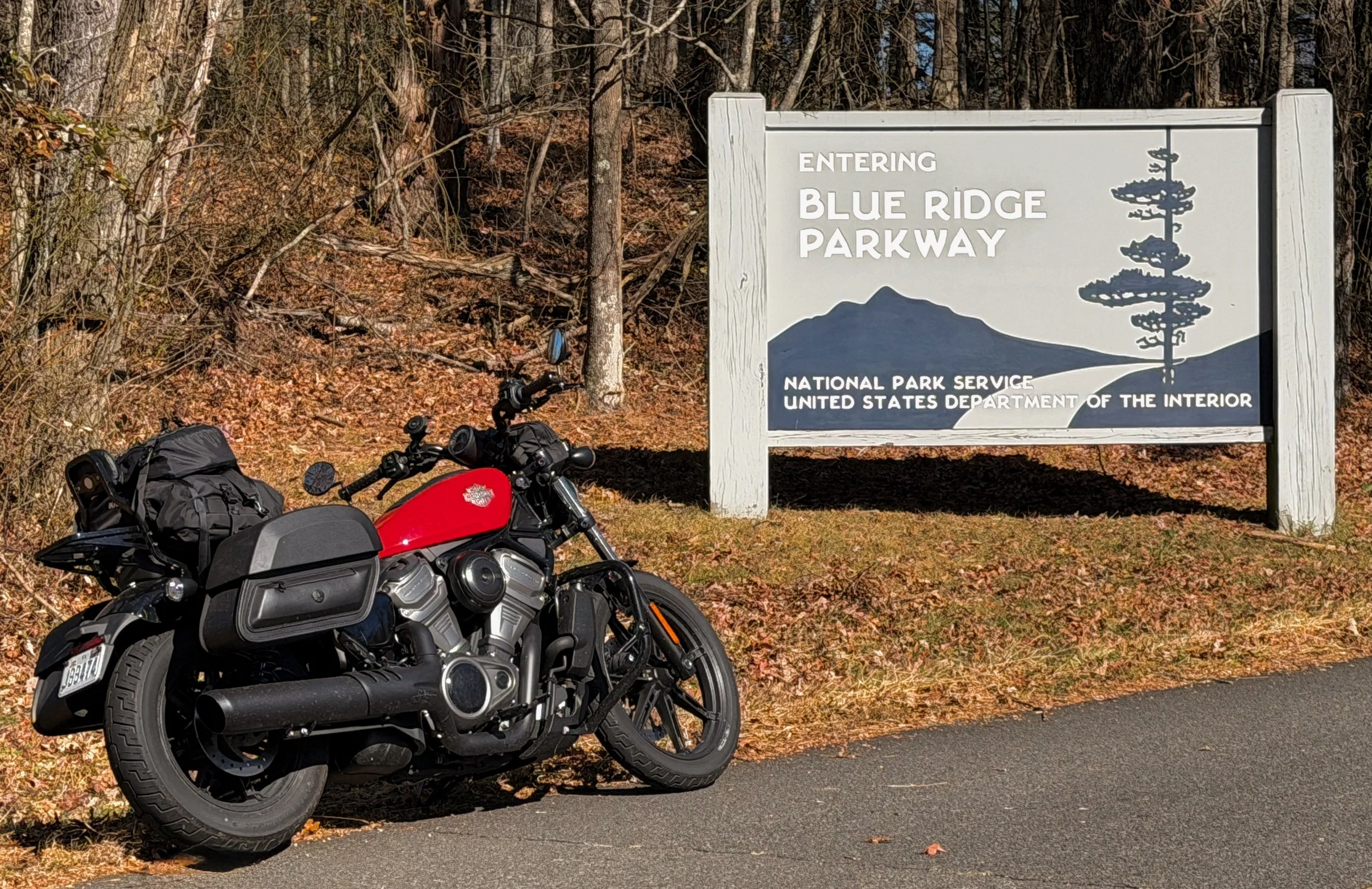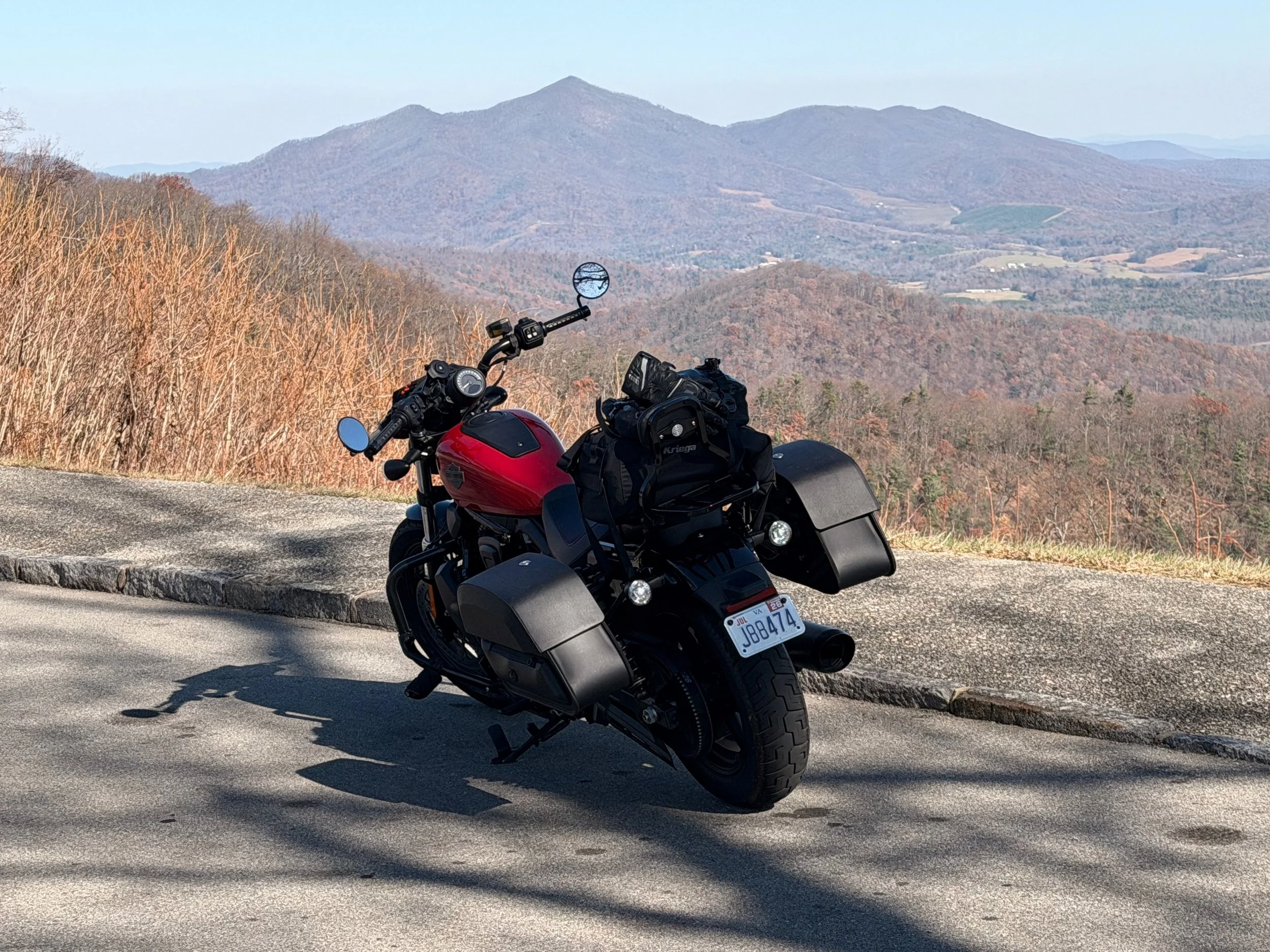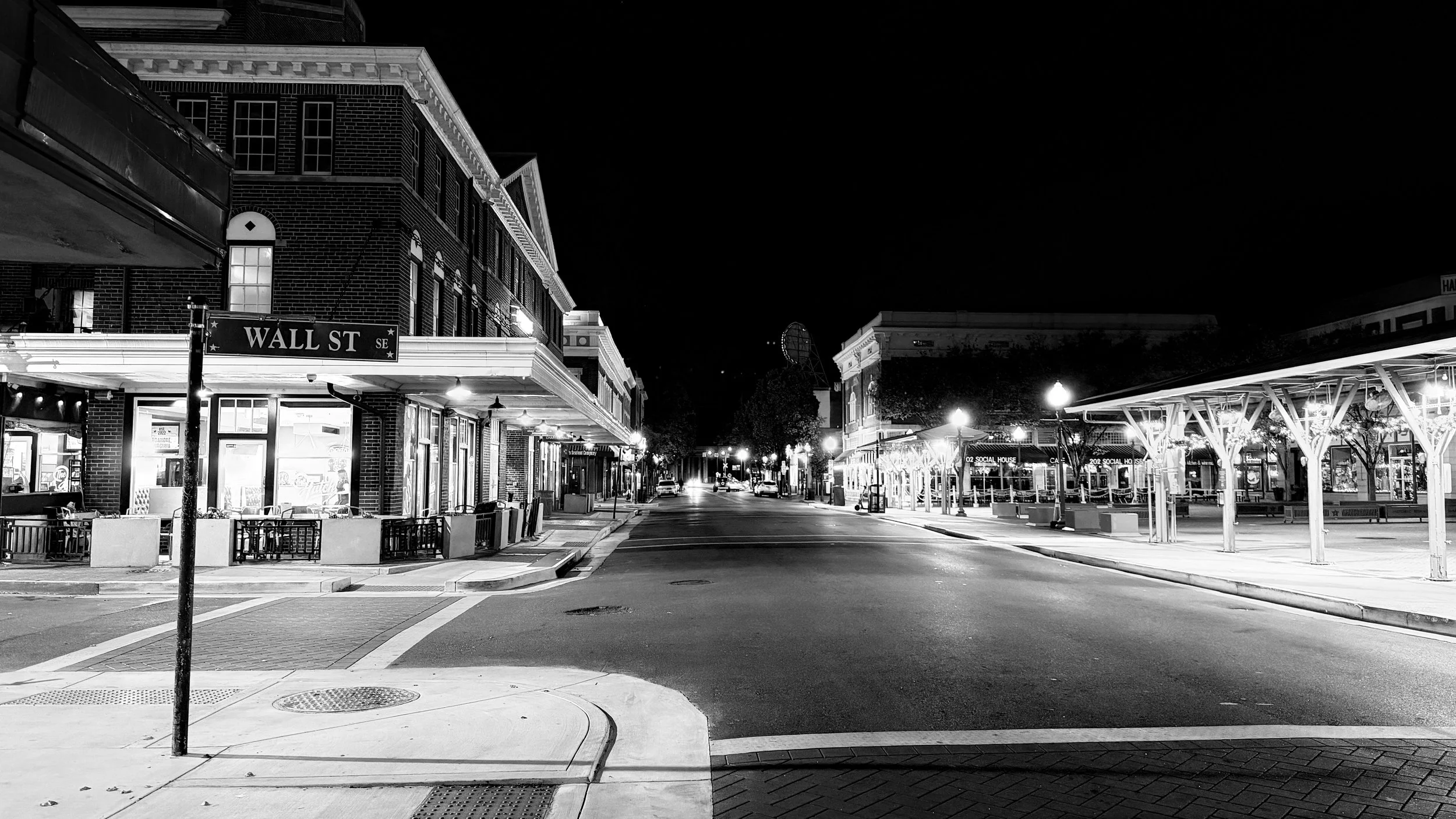Shadows in the Light
12 November
“Nahrt tuddae, sweedhurd,” says the waitress as she tops up my coffee at Fancy Gap on the Blue Ridge Parkway. Despite being only twenty miles from Galax, I explain I’ve stopped for an hour, hoping the temperature might rise a degree or two—but local knowledge suggests 6ºC is as good as it’s going to get. But who cares? Slightly numb fingers are a small price to pay to ride this road, in virtual solitude, under another flawless sky.
The Parkway forms the longest linear park in the U.S., running for 469 miles through 29 counties in Virginia and North Carolina and linking Shenandoah National Park to the Great Smoky Mountains. It follows the spine of the Blue Ridge, a major mountain chain within the Appalachians. It has been the most visited site in the National Park System every year since 1946, bar four—and with a speed limit never higher than 45 mph, and lower in some sections, this is one to savour for the scenery. A Harley is the perfect tool for the job.
I rode the section south of Boone towards Tennessee last year on a BMW K1600GT which, while epic and memorable, is simply too fast for this road, forever urging you to exploit the wide curves and immaculate tarmac. And with double yellow lines down the middle of most of it, overtaking is nigh on impossible. Still, all commercial vehicles are banned, so at least you’re spared the sight of some ugly truck’s backside for mile upon mile. Now they just need to do the same with RVs—and also the idiots with all manner of God-bothery symbology (fishes, crosses, and so on) plastered across the back of their crappy Suzukis or whatever—like the one I crawled behind today before leaving the Parkway at Roanoke, Virginia, to visit the O. Winston Link Museum.
His is not a name many will recognise—and until the early 1980s, very few others (me included) knew it either. As a commercial and industrial photographer, Link worked for companies such as Alcoa, Texaco, B.F. Goodrich, and the now-defunct Kaiser-Frazer car brand. His passion, though, was steam trains; and, working with the co-operation of the Norfolk & Western Railroad Company (N&W), he experimented with photographing locomotives at night using elaborate flash-lighting rigs, some comprising hundreds of bulbs.
The results were extraordinary: dramatic, sharply drawn, coal-black shadows juxtaposed with brilliantly illuminated fragments of Americana—the archetypal Main Street of Ghost Town (1957); the interior of a Chevy convertible in Eastbound at the Drive-In (1956)—scenes etched onto celluloid just as steam was giving way to diesel and the car was becoming America’s dominant means of transport. In terms of composition, Link’s work stands alongside the very best—Adams, Cartier-Bresson, et al.—but it is the obsessive attention he paid to lighting that sets him apart. Necessity was the mother of invention, or as Link put it: “You can’t move the sun, and you can’t move the tracks, so you have to do something with the light.”
After a career of virtual obscurity, and aged 65, Link’s work finally caught the eye of a New York gallery owner. Recognition and success duly followed—along with a tempestuous second marriage to a Spanish woman who royally ripped him off, diverting funds to herself and then stealing his prints and negatives before ending up in the slammer for five years.
Since 2004, the former N&W ticket office in the basement of Roanoke Station has housed a permanent exhibition dedicated to Link and his work. It’s not traditional gallery space: illogical to navigate, chaotically curated and interspersed with random Civil War and First Americans displays—and features curiosities such as a reconstructed darkroom and relics from his most famous photographs: a vintage petrol pump, a railway-crossing sign, a clock or two, and so on. Also showcased are the sound recordings he made of locomotives, released on LP for fellow enthusiasts to savour. And while this does tip a toe into the murky pools of middle-aged man’s obsessions, there is something about that haunting major 7th chord that perfectly complements the photographs of a vanishing world, just before it flickered from view.
But it’s the original prints—albeit an incomplete collection—that take centre stage, displaying a depth and organic quality that digital has never achieved and perhaps never will. Like the subjects of Link’s work, the technology may be surpassed, but something magical has been lost along the way.
Later, on the other side of the railway tracks in downtown Roanoke, sits Alexander’s, a restaurant occupying roughly the same niche in Virginian society as Rules does in London—setting aside the small detail that Rules opened 23 years after the American War of Independence and Alexander’s dates only from 1979. Both have tablecloths, deep carpet, and a pervasive sense of calm even when busy; both attract well-mannered, older diners, tourists, and well-off families marking an occasion.
At Rules the art is old and heavy; Alexander’s prefers quality contemporary pieces. Neither has sharing plates, blackboard menus, laboured explanations of their ‘concept’, farm-to-plate manifestos, or any of the other things I usually lap up—just slightly overpriced but well-cooked, more adventurous-than-comfort-food dishes served with warmth and charm. In spite of—or perhaps because of—their only half-hearted resistance to the incursions of the modern world, the future looks bright for both Rules and Alexander’s.
Across the railway tracks that bisect Roanoke is the Virginia Museum of Transportation. Silent since 1991, Link’s favourite locomotive, the Class A N&W 1218, rests here.
Main Street, Roanoke - in the style of O Winston Link


